Updated: 2012-10-31 18:31:33
Berkeley — The more time it takes for an earthquake fault to heal, the faster the shake it will produce when it finally ruptures, according to a new study by engineers at the University of California, Berkeley, who conducted their work using a tabletop model of a quake fault. read more
Updated: 2012-10-31 18:30:31
Cambridge, Mass. - October 31, 2012 - Scientists have created new kinds of particles, 1/100th the diameter of a human hair, that spontaneously assemble themselves into structures resembling molecules made from atoms. These new particles come together, or "self-assemble," to form structures in patterns that were previously impossible to make and hold promise for manufacturing advanced optical materials and ceramics.read more
Updated: 2012-10-31 18:30:05
Magnetically speaking, photons are the mavericks of the engineering world. Lacking electrical charge, they are free to run even in the most intense magnetic fields. But all that may soon change. In a paper published in Nature Photonics, an interdisciplinary team from Stanford University reports that it has created a device that tames the flow of photons with synthetic magnetism.read more
Updated: 2012-10-31 16:53:58

Deinosuchus, an enormous alliagtoroid, undoubtedly gave dinosaurs much to fear
Updated: 2012-10-31 16:01:12
A team of physicists from Europe and South Africa showed that electrons moving randomly in graphene can mimic the dynamics of particles such as cosmic rays, despite travelling at a fraction of their speed, in a paper about to be published in EPJ B.read more
Updated: 2012-10-31 15:30:14
WASHINGTON--Around the globe, mariners and navies alike have long observed and included weather and sea states in navigational planning when plotting course or developing military strategy. And although forecasting had become an integral function by the start of the 20th century, these predictions were often crude and qualitative.read more
Updated: 2012-10-30 14:01:32

Thanks to some historical detectivework, a pair of researchers has relocated one of the earliest recognized dinosaur sites in the American west
Updated: 2012-10-30 02:30:57
The Cretaceous Period of Earth history ended with a mass extinction that wiped out numerous species, most famously the dinosaurs. A new study now finds that the structure of North American ecosystems made the extinction worse than it might have been. Researchers at the University of Chicago, the California Academy of Sciences and the Field Museum of Natural History will publish their findings Oct. 29 online in the Proceedings of the National Academy of Sciences.read more
Updated: 2012-10-29 21:20:59
The Cretaceous Period of Earth history ended with a mass extinction, famous for wiping out the dinosaurs. read more
Updated: 2012-10-29 16:33:02
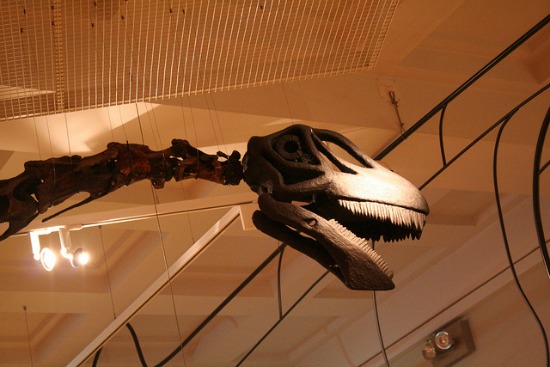
Sauropods are iconic dinosaurs, but the first of their kind ever found was initially thought to be a huge crocodile
Updated: 2012-10-26 22:16:08
What makes some ocean animals more prone to extinction? An analysis of roughly 500 million years of fossil data for marine invertebrates reveals that ocean animals with small ranges have been consistently hard hit, whereas population size has little effect. This means that reductions in range size -- such as when a species' habitat is destroyed or degraded -- could mean a big increase in long-term extinction risk, even when remaining populations are large, the authors say. #187; riginal news
Updated: 2012-10-26 22:15:10
Giant German hippopotamuses wallowing on the banks of the Elbe are not a common sight. Yet 1.8 million years ago hippos were a prominent part of European wildlife, when mega-fauna such as woolly mammoths and giant cave bears bestrode the continent. Now palaeontologists believe that the changing climate during the Pleistocene Era may have forced Europe's hippos to shrink to pygmy sizes before driving them to warmer climes. #187; riginal news
Updated: 2012-10-26 22:15:04
A fossil discovered in Texas is a new species of coelacanth fish. Paleontologists identified the skull as a 100 million-year-old coelacanth, making it the youngest discovered in Texas. The new species, Reidus hilli, brings to 81 the world's coelacanth species, including two alive today. Coelacanth fish have eluded extinction for 400 million years. Reidus hilli belongs to Dipluridae, a new family that is transitional between Mawsoniidae and Latimeriidae families. #187; riginal news
Updated: 2012-10-26 22:14:56
While the American Museum of Natural History is known for its public exhibits, much important work is done behind the scenes, using tools like DNA sequencing and computer analysis. #187; riginal news
Updated: 2012-10-26 22:12:17
Australopithecus afarensis was an upright walking species, but the question of whether it also spent much of its time in trees has been the subject of much debate. For the first time, scientists have thoroughly examined the two complete shoulder blades of the fossil "Selam." Analyses of these rare bones showed them to be quite apelike, suggesting that this species was adapted to climbing trees in addition to walking bipedally when on the ground. #187; riginal news
Updated: 2012-10-26 17:58:30
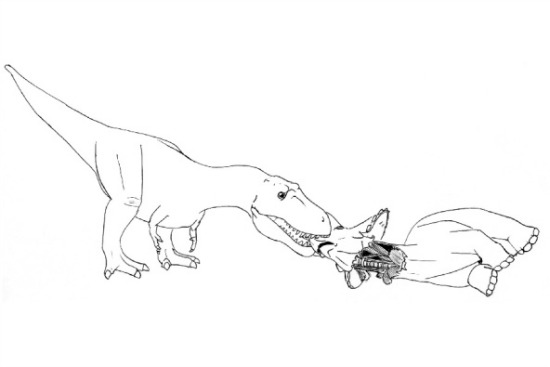
We love to imagine Tyrannosaurus fighting Triceratops to the death, but did such battles ever happen?
Updated: 2012-10-26 10:30:12
Much more must be done to develop energy efficient cars, buildings and domestic appliances to address climate change – according to new research from the Tyndall Centre for Climate Change Research at the University of East Anglia.
A report published today in Nature Climate Change shows that twice as much effort is being spent on developing energy supply technologies - such as new power stations - than is spent on improving the efficiency with which energy is used. read more
Updated: 2012-10-25 21:00:29
EAST LANSING, Mich. — Warmer oceans in the future could significantly alter populations of phytoplankton, tiny organisms that could have a major impact on climate change.read more
Updated: 2012-10-25 20:30:18
CHESTNUT HILL, MA (October 25, 2012) – In the relatively new scientific frontier of topological insulators, theoretical and experimental physicists have been studying the surfaces of these unique materials for insights into the behavior of electrons that display some very un-electron-like properties.read more
Updated: 2012-10-25 20:30:06
WASHINGTON, Oct. 25, 2012 — The latest episode in the American Chemical Society's (ACS') award-winning Global Challenges/Chemistry Solutions podcast series reports that scientists have discovered a plausible way to manipulate the populations of mostly beneficial microbes in "purified" drinking water to potentially benefit consumers.read more
Updated: 2012-10-25 19:00:10

A trio of feathered dinosaurs tests a longstanding hypothesis and hint that there may be more feathered dinosaur fossils than anyone ever expected
Updated: 2012-10-25 17:02:43
The case of six Italian scientists sentenced to be jailed for failing to warn of the L'Aquila earthquake in Italy in 2009 highlights the difficult task facing scientists in dealing with risk communication and uncertainty.
We deal with risks and uncertainty all the time in our daily lives. Weather forecasts do not come with guarantees and despite the death tolls on our roads we continue to use bikes, cars, and buses. We have also long built our homes and workplaces in areas known to have a history of earthquakes, floods, or volcanic activity.read more
Updated: 2012-10-24 22:30:13
Recycling keeps paper, plastics, and even jeans out of landfills. Could recycling rare-earth magnets do the same? Perhaps, if the recycling process can be improved.
Scientists at the U.S. Department of Energy's (DOE) Ames Laboratory are working to more effectively remove the neodymium, a rare earth element, from the mix of other materials in a magnet. Initial results show recycled materials maintain the properties that make rare-earth magnets useful.read more
Updated: 2012-10-24 20:00:11
A multinational research team has discovered filamentous bacteria that function as living power cables in order to transmit electrons thousands of cell lengths away.
The Desulfobulbus bacterial cells, which are only a few thousandths of a millimeter long each, are so tiny that they are invisible to the naked eye. And yet, under the right circumstances, they form a multicellular filament that can transmit electrons across a distance as large as 1 centimeter as part of the filament's respiration and ingestion processes.read more
Updated: 2012-10-24 15:44:00

Paleontologists have known about Heterodontosaurus for decades, but a new restoration of the dinosaur shows just how freaky it was
Updated: 2012-10-24 14:30:27
ARGONNE, Ill. --- The study of materials at extreme conditions took a giant leap forward with the discovery of a way to generate super high pressures without using shock waves whose accompanying heat turns solids to liquid.read more
Updated: 2012-10-24 00:30:28
The laws that govern how intricate surface patterns, such as those found in the cauliflower, develop over time have been described, for the first time, by a group of European researchers.
In a study published today, 24 October, in the Institute of Physics and German Physical Society's New Journal of Physics, researchers have provided a mathematical formula to describe the processes that dictate how cauliflower-like patterns – a type of fractal pattern – form and develop.read more
Updated: 2012-10-23 22:31:42
A new study reported in this week's PLOS Medicine reports findings from a study carried out in four African countries by Carla Makhlouf Obermeyer and colleagues on approaches towards expanding testing and counselling for HIV. Provider-initiated HIV testing has the potential to expand access to treatment and prevention services, but there have been concerns as to whether consent practices, client confidentiality, and the referral to care will be acceptable under provider-initiated testing modes. read more
Updated: 2012-10-23 21:30:05
ERIE, Pa. - Researchers at Mercyhurst University continue to investigate the presence of potentially harmful chemicals in the beach waters of Presque Isle State Park and have added a new one to their list: sucralose. A chlorinated form of sucrose found in artificial sweeteners, sucralose is used in an estimated 4,500 products ranging from Halloween candies to diet sodas. read more
Updated: 2012-10-23 20:00:21
University of California, Davis, researchers for the first time have looked inside gallium manganese arsenide, a type of material known as a "dilute magnetic semiconductor" that could open up an entirely new class of faster, smaller devices based on an emerging field known as "spintronics."
Materials of this type might be used to read and write digital information not by using the electron's charge, as is the case with today's electronic devices, but by using its "spin."read more
Updated: 2012-10-23 18:00:35
HOUSTON -- (Oct. 23, 2012) -- A new Rice University-led study finds that a deep connection about 50 miles underground can explain the enigmatic behavior of two of Earth's most notable volcanoes, Hawaii's Mauna Loa and Kilauea. The study, the first to model paired volcano interactions, explains how a link in Earth's upper mantle could account for Kilauea and Mauna Loa's competition for the same deep magma supply and their simultaneous "inflation," or bulging upward, during the past decade.
The study appears in the November issue of Nature Geoscience.read more
Updated: 2012-10-23 15:40:06
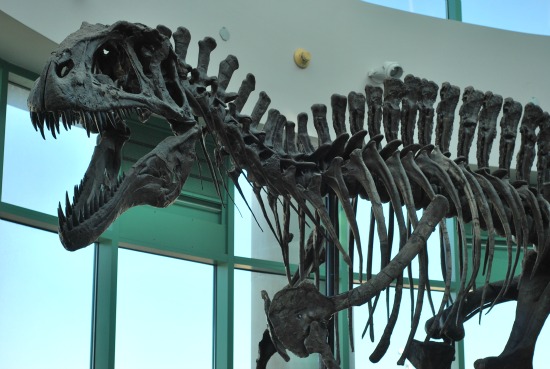
This year's SVP conference in Raleigh, North Carolina showcased a wealth of new dinosaur science
Updated: 2012-10-22 22:07:37
Scientists have discovered why the 'broken world' following the worst extinction of all time lasted so long -- it was simply too hot to survive. The end-Permian mass extinction, which occurred around 250 million years ago in the pre-dinosaur era, wiped out nearly all the world's species. Typically, a mass extinction is followed by a 'dead zone' during which new species are not seen for tens of thousands of years. In this case, the dead zone, during the Early Triassic period which followed, lasted for a perplexingly long period: five million years. #187; riginal news
Updated: 2012-10-22 22:01:24
A series of radiocarbon measurements from Japan's Lake Suigetsu will give scientists a more accurate benchmark for dating materials, especially for older objects. Researchers extracted cores containing organic material from the bottom of the Japanese lake where it had lain undisturbed for tens of thousands of years. They provide a more precise way to examine radiocarbon ages of organic material for the entire 11,000-53,000-year time range. #187; riginal news
Updated: 2012-10-22 15:42:55
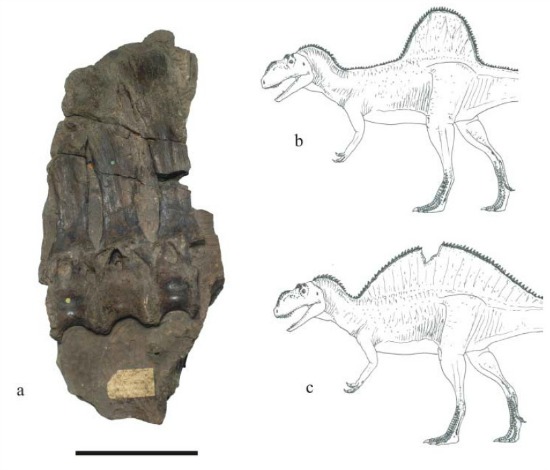
For over a century and a half, paleontologists have been confounded by the sail-backed carnivore Becklespinax. What did this dinosaur really look like?
Updated: 2012-10-19 17:21:01
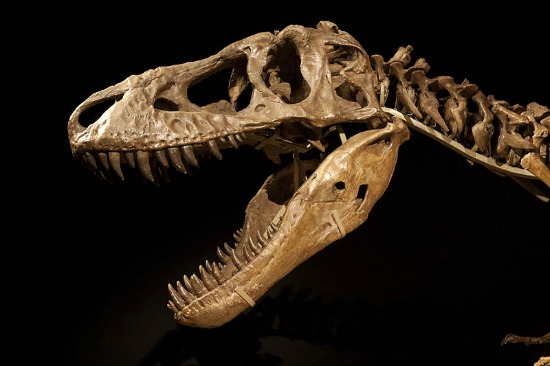
Earlier this week, federal officials arrested a man charged with selling numerous illegal dinosaur specimens
Updated: 2012-10-18 14:29:50

What caused Australia's dinosaur stampede? A short musical performance suggests an answer
Updated: 2012-10-17 01:29:46
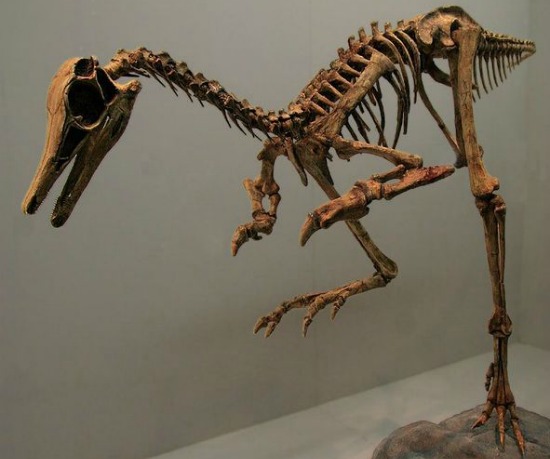
The weird alvarezsaurs look perfectly-adapted to eating termites, but how can we find out what they really ate?
Updated: 2012-10-16 15:27:04

Mountain of Dinosaurs, from 1967, uses extinction as a metaphor for Soviet oppression
Updated: 2012-10-15 15:03:18

Though little-known to the public, Agujaceratops plays an important role in tracing one particular episode in dinosaur evolution
Updated: 2012-10-12 15:23:47

Some scrapped Jurassic Park 4 designs show the movie's insane ideas for dinosaur soldiers
Updated: 2012-10-11 15:43:49
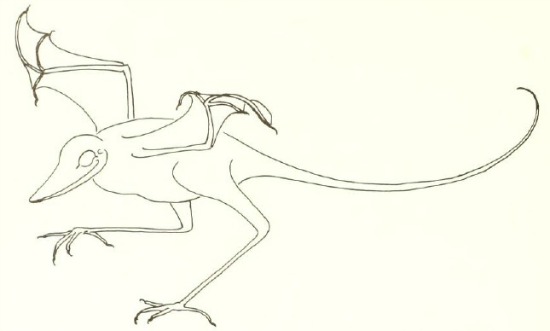
Just when naturalists began to suspect that birds might be dinosaurs, one researcher put forward a truly strange idea of what early bird ancestors would have looked like
Updated: 2012-10-10 18:16:07
Complex brains evolved much earlier than previously thought, as evidenced by a 520-million-year-old fossilized arthropod with remarkably well-preserved brain structures. Representing the earliest specimen to show a brain, the fossil provides a "missing link" that sheds light on the evolutionary history of arthropods, the taxonomic group that comprises crustaceans, arachnids and insects. #187; riginal news

 Deinosuchus, an enormous alliagtoroid, undoubtedly gave dinosaurs much to fear
Deinosuchus, an enormous alliagtoroid, undoubtedly gave dinosaurs much to fear Thanks to some historical detectivework, a pair of researchers has relocated one of the earliest recognized dinosaur sites in the American west
Thanks to some historical detectivework, a pair of researchers has relocated one of the earliest recognized dinosaur sites in the American west Sauropods are iconic dinosaurs, but the first of their kind ever found was initially thought to be a huge crocodile
Sauropods are iconic dinosaurs, but the first of their kind ever found was initially thought to be a huge crocodile We love to imagine Tyrannosaurus fighting Triceratops to the death, but did such battles ever happen?
We love to imagine Tyrannosaurus fighting Triceratops to the death, but did such battles ever happen? A trio of feathered dinosaurs tests a longstanding hypothesis and hint that there may be more feathered dinosaur fossils than anyone ever expected
A trio of feathered dinosaurs tests a longstanding hypothesis and hint that there may be more feathered dinosaur fossils than anyone ever expected This year's SVP conference in Raleigh, North Carolina showcased a wealth of new dinosaur science
This year's SVP conference in Raleigh, North Carolina showcased a wealth of new dinosaur science For over a century and a half, paleontologists have been confounded by the sail-backed carnivore Becklespinax. What did this dinosaur really look like?
For over a century and a half, paleontologists have been confounded by the sail-backed carnivore Becklespinax. What did this dinosaur really look like? Earlier this week, federal officials arrested a man charged with selling numerous illegal dinosaur specimens
Earlier this week, federal officials arrested a man charged with selling numerous illegal dinosaur specimens The weird alvarezsaurs look perfectly-adapted to eating termites, but how can we find out what they really ate?
The weird alvarezsaurs look perfectly-adapted to eating termites, but how can we find out what they really ate? Though little-known to the public, Agujaceratops plays an important role in tracing one particular episode in dinosaur evolution
Though little-known to the public, Agujaceratops plays an important role in tracing one particular episode in dinosaur evolution Just when naturalists began to suspect that birds might be dinosaurs, one researcher put forward a truly strange idea of what early bird ancestors would have looked like
Just when naturalists began to suspect that birds might be dinosaurs, one researcher put forward a truly strange idea of what early bird ancestors would have looked like